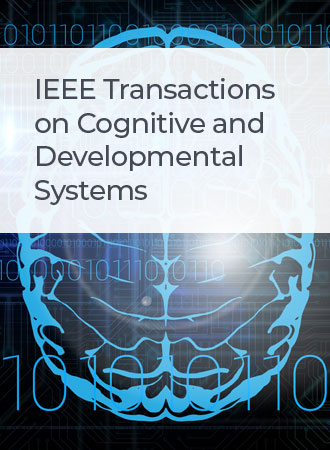增强人机交互的人体运动意图和时变手臂刚度同步估计
IF 4.9
3区 计算机科学
Q1 COMPUTER SCIENCE, ARTIFICIAL INTELLIGENCE
IEEE Transactions on Cognitive and Developmental Systems
Pub Date : 2024-10-16
DOI:10.1109/TCDS.2024.3480854
引用次数: 0
摘要
人体生理运动控制研究的最新进展表明,人体末端刚度大小随抓握力的增加而线性增加。在此基础上,本文提出了一种将线性二次估计(LQE)滤波器与抓取力推断的刚度模型相结合的方案,可以同时估计人体手臂的刚度和运动意图。在此基础上,设计了用于人机物理交互的在线变阻抗控制器(VIC)。通过平面机器人界面的实验验证了所提出的刚度模型和估计方法。为了评估其在实际pHRI任务中的性能,将结合VIC的人体手臂刚度和意图估计的实现扩展到遥操作钉孔和机器人辅助康复任务中。实验结果表明,该方法可以有效地同时估计人体运动意图和手臂刚度。与现有方法相比,拟议的VIC在增加灵活性、有效指导和减少人力方面增强了pHRI。本文章由计算机程序翻译,如有差异,请以英文原文为准。
Simultaneous Estimation of Human Motion Intention and Time-Varying Arm Stiffness for Enhanced Human–Robot Interaction
Recent advances in physiological human motor control research indicate that human endpoint stiffness magnitude increases linearly with grasp force. Based on these findings, a scheme was proposed in this article to integrate the linear quadratic estimation (LQE) filter with the stiffness model inferred from grasp force, which can simultaneously estimate the human arm's stiffness and motion intention. Then, an online variable impedance controller (VIC) was designed based on these estimations for physical human–robot interaction (pHRI). The proposed stiffness model and estimation method were validated through experiments using a planar robotic interface. To assess its performance in practical pHRI tasks, the implementation of human arm stiffness and intention estimation combining with VIC was extended to teleoperation peg-in-hole and robot-assisted rehabilitation tasks. The experimental results demonstrate that the proposed method can effectively estimate human motion intention and arm stiffness simultaneously. Compared to existing methods, the proposed VIC enhances pHRI in terms of increased flexibility, effective guidance, and reduced human effort.
求助全文
通过发布文献求助,成功后即可免费获取论文全文。
去求助
来源期刊

IEEE Transactions on Cognitive and Developmental Systems
Computer Science-Software
CiteScore
7.20
自引率
10.00%
发文量
170
期刊介绍:
The IEEE Transactions on Cognitive and Developmental Systems (TCDS) focuses on advances in the study of development and cognition in natural (humans, animals) and artificial (robots, agents) systems. It welcomes contributions from multiple related disciplines including cognitive systems, cognitive robotics, developmental and epigenetic robotics, autonomous and evolutionary robotics, social structures, multi-agent and artificial life systems, computational neuroscience, and developmental psychology. Articles on theoretical, computational, application-oriented, and experimental studies as well as reviews in these areas are considered.
 求助内容:
求助内容: 应助结果提醒方式:
应助结果提醒方式:


